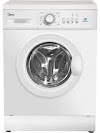Huawei is the world’s second largest smartphone manufacturer, and the company produces promising smartphones. Well, Huawei has now entered the competitive smart speaker market with the AI Cube smart speaker. The company announced this Alexa-powered smart speaker at IFA 2018. So here’s everything you need to know about the AI Cube smart speaker.
ALSO READ: Bose Launches Home Speaker 500 With Alexa Onboard
AI Cube Smart Speaker: Elucidated
Huawei AI Cube seems to be a promising smart speaker that packs some interesting features. The speaker looks sleek and the design aesthetics are identical to the Google Home. That said, don’t let the name Huawei AI Cube Smart Speaker fool you as these speakers are cylindrical in shape.
Huawei has partnered with Amazon to offer Alexa voice-assistant support to this smart speaker. Furthermore, Alexa also helps unleash the AI capabilities of this smart speaker.

Surprisingly, the Huawei AI Cube is the first smart speaker that packs a 4G portable router. In simple words, the smart speaker comes with an LTE SIM card slot using which you can create a hotspot on the go. Apart from that, the AI Cube Smart Speaker also sports an ethernet port, using which you can transform this speaker into a router.

According to Huawei, the AI Cube supports LTE Cat6 speeds or a maximum of 300mbps download speed. The AI Cube smart speaker is compatible with 802.11ac and it ’s competent to work on 2.4GHz and 5GHz channels. As for LAN, the speaker offers a maximum of 1200Mbps transmission speeds. Lastly, Huawei AI Cube also offers a single RJ-45 port. Kudos to Huawei for nicely hiding every port on the speaker.
AI Cube Smart Speaker: Sound Quality

The Huawei AI Cube smart speaker offers a 360-degree audio experience and comes with four microphones that have far-field voice recognition capabilities. The controls are located on the top of the speaker. Nothing much can be said about the sound quality without testing the speakers, but Huawei claims that the single 400ml sound cavity can offer solid performance on the low-end and mid-ranges.
Source:Techworm.in







0 Comments